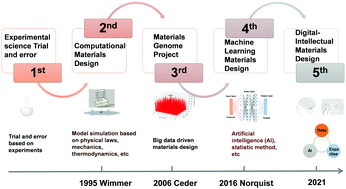Digital-intellectual design of microporous organic polymers
Abstract
Microporous organic polymers (MOPs) are a new class of microporous materials. Due to their high porosity, large pore volume, and large surface area, MOPs exhibit excellent performance in gas adsorption and storage, membrane separation, ion capture, heterogeneous catalysis, light energy conversion and storage, capacitance, and other fields. However, selecting high-performance materials for specific applications from thousands of candidate MOPs is a key problem. Traditional design strategies for new materials with targeted properties, including trial-and-error and relying on the experiences of domain experts, are time- and cost-consuming. With the rapid development of computation technology and theoretical chemistry, the discovery of new materials is no longer a purely experimental subject. Breaking away from the traditional trial-and-error strategy for materials discovery, materials design is emerging and gaining increasing attention. In addition, the ability to collect “big data” has greatly improved and has further stimulated the development of new methods for materials design and discovery. In this perspective, we examine how data-driven techniques combine artificial intelligence (AI) and human expertise, playing a significant role in the design of MOPs. Such analytics can significantly reduce time-to-insight and accelerate the cost-effective materials discovery, which is the goal for designing future MOPs.

- This article is part of the themed collections: 2021 PCCP HOT Articles and PCCP Perspectives


 Please wait while we load your content...
Please wait while we load your content...